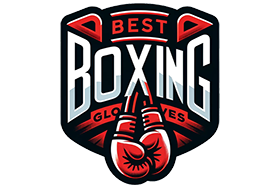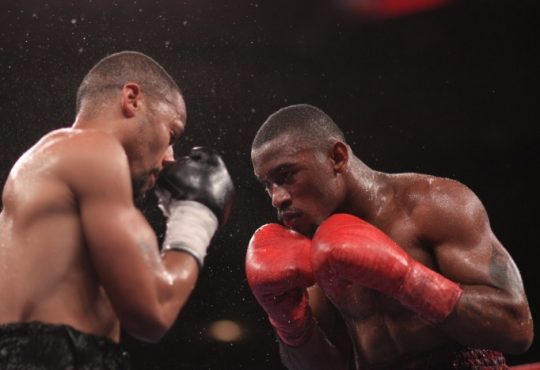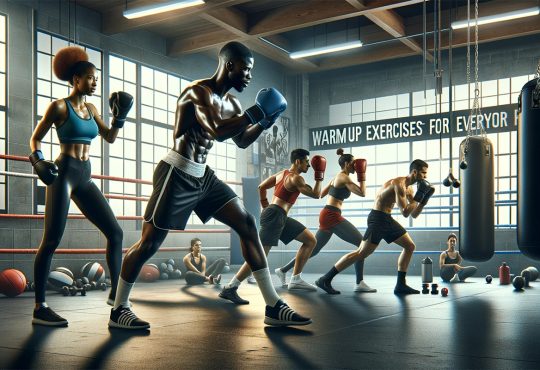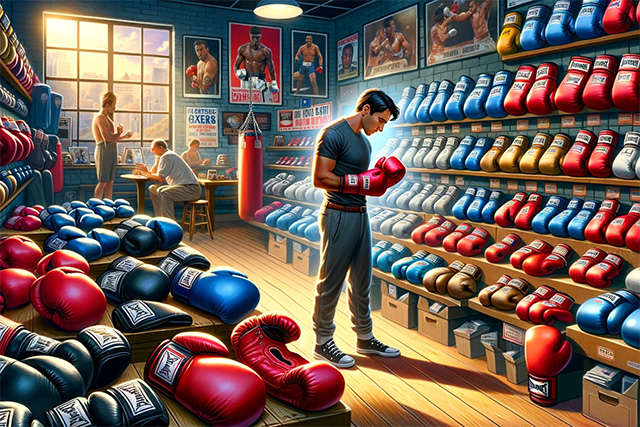
Choosing the Perfect Boxing Gloves
You wouldn’t think it at first, but choosing the right pair of boxing gloves? It’s a bigger deal than most folks realize. I learned that the hard way years ago—picked up a flashy pair off the shelf because they looked tough. A couple busted knuckles and sore wrists later, I finally understood: boxing gloves aren’t just gear—they’re protection, performance, and longevity all wrapped in leather.
Whether you’re just stepping into the gym for your first heavy bag session or gearing up for regular sparring, the gloves you wear directly affect your safety, your training goals, and how your body holds up over time. I’m talking wrist support that actually supports, padding that protects your knuckles when you’re throwing volume, and sizing that, well, doesn’t make your hands go numb mid-round (yes, that’s happened to me).
So, if you’ve ever wondered which gloves are best for you—or you’re just tired of guessing and hoping for the best—this quick, no-nonsense guide will break it all down. From glove sizing and type to training needs and injury prevention, let’s get your hands in the right pair.
👉 Let’s start with how to figure out what type of glove you actually need.
Why Boxing Gloves Matter More Than You Think
Back when I first started training, I honestly thought boxing gloves were just a formality—something you wore so the gym wouldn’t kick you out. I was wrong. Very wrong. Boxing gloves are the frontline defense for your hands, your wrists, your training partner’s face—everything.
Now, here’s the thing most beginners don’t realize (and I wish someone had told me): your fist isn’t built to repeatedly smash into things. Even with solid hand wraps underneath, without the right glove—with proper padding, shock resistance, and wrist support—you’re basically asking for joint strain, busted knuckles, or worse. I’ve seen guys with fractured metacarpals just from hitting mitts with cheap gear. It ain’t worth it.
But it’s not just about protection. Gloves also shape your form. That built-in padding and contour? It encourages proper fist alignment. You’ll feel it, especially when you’re learning how to turn over your shots or sit down on your punches. There’s actually a surprising amount of glove tech out there now—different densities of foam, layered impact zones, even ventilated palms (which I personally love, especially in summer sessions when the sweat just won’t quit).
So yeah, gloves aren’t optional—they’re essential boxing gear. Not just for your safety, but for the way you develop as a boxer. Choose them like you would your coach: carefully, and with long-term goals in mind.
Types of Boxing Gloves Explained
I remember walking into my first gear shop—wide-eyed, hyped, completely clueless—and staring at a wall of gloves that all looked the same… but definitely weren’t. Trust me, not all gloves are created equal, and picking the wrong type can totally wreck your training—or worse, your hands.
So let’s break it down. Bag gloves? Built to take a beating. They’re made for the heavy bag, mitts, and drills—usually firmer padding, reinforced knuckle zones, and less fluff. You’ll feel your shots more, which is great for feedback… but not so great for sparring (please don’t spar in these).
Training gloves (also called all-purpose gloves) are like the gym shoes of boxing—versatile, usually decent padding, often velcro for quick on/off. Not too soft, not too stiff. I think they’re a solid option if you’re just starting out.
Sparring gloves are a different beast. Heavier (typically 14–16 oz) with softer padding. They’re made to protect your partner, not KO them. What I’ve found is, cheap sparring gloves don’t just feel wrong—they can make you that guy in the gym.
Then there’s competition gloves—lighter, tighter, and honestly kinda unforgiving. They’re stripped down for speed and power. These are for actual sanctioned bouts, not your Tuesday night pad session.
Also, quick side note—MMA gloves aren’t for boxing. Totally different purpose, minimal padding, open fingers… just don’t mix them up.
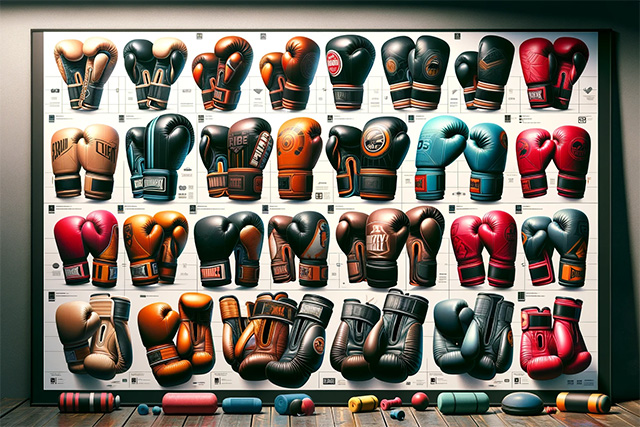
Finding the Right Size and Weight
Alright, let’s talk sizing—because nothing kills your jab faster than a glove that doesn’t fit right. I’ve worn gloves that felt like oven mitts, and others so tight I could barely make a fist. Getting the right size and weight isn’t just comfort—it’s performance, protection, and honestly, a matter of not wrecking your wrists.
Here’s how I break it down. First, start with your purpose:
- Bag work or mitts? You’re probably looking at 10oz or 12oz gloves—lighter, tighter, and give you that crisp contact feel.
- General training or fitness boxing? I usually recommend 14oz gloves. They’re a sweet spot—enough padding to protect your hands, but not so bulky that your punches feel like you’re swinging bricks.
- Sparring? Go for 16oz gloves, minimum. Most gyms won’t even let you in the ring otherwise. Some heavier folks (200+ lbs) might need 18oz for safety.
Now, glove weight is measured in ounces (oz), but it’s not just about weight class—it’s about hand size and purpose. Wrap a tape around the widest part of your knuckles (excluding the thumb). If it’s around 6–8 inches, you’re probably good in a 10–12oz range. Bigger hands? You’ll need more room, so size up accordingly.
What I’ve found is: if the glove feels like it’s fighting you when you try to make a fist, it’s probably the wrong size. You want snug, not suffocating.
Bottom line—don’t pick gloves by guesswork. Use your hand measurements, training goals, and comfort. And if you can, always try them on before buying. Your future hands will thank you.
Materials and Construction Quality: What’s Really Inside Your Gloves
You ever peel off your gloves after a sweaty round and think, “Why do these things already feel like they’re falling apart?” Yeah—I’ve been there. More than once. And 9 times outta 10, it came down to material quality.
Leather vs synthetic is the big fork in the road. Real cowhide leather? That’s the gold standard. It breaks in beautifully, lasts longer, and usually smells… well, like a proper gym glove should. I’ve had a pair of full-grain leather gloves last me close to five years with heavy use. PU leather or synthetic vinyl, on the other hand? Looks good for a minute but tends to crack, peel, and trap heat like a sauna by month three. Still, if you’re just getting started or on a tight budget, synthetics can work short-term (just know what you’re getting).
Now, here’s what I’ve learned the hard way: good stitching and multi-layer foam padding matter just as much. Loose seams? Recipe for busted gloves. And dense padding (especially over the knuckles) helps spread out impact—critical if you’re hitting the bag hard or sparring regularly.
Oh—and mesh panels? Total game changer for breathability. My hands used to overheat like crazy until I switched to gloves with ventilated palms.
Closure Systems and Wrist Support: Lace-Up vs. Velcro
If I had a dollar for every time someone asked me, “Lace-ups or Velcro?”—I’d probably still be buying hand wraps, but you get the idea. It’s a classic debate, and honestly, the right answer depends on what you’re doing and who’s around to help.
Lace-up gloves? They’re the gold standard when it comes to wrist stability. You can cinch them tight right up the forearm, and when done properly (by someone else—because good luck tying them solo), they feel like your gloves are part of your bones. That’s why you’ll see pros wear them in fights and serious sparring. What I’ve found is, nothing beats the locked-in feel of laces—but they’re a pain if you’re training solo. I’ve literally taped over mine in the past just to keep ‘em on mid-session.
Velcro (aka hook-and-loop) gloves are your gym-day workhorse. Fast to put on, easy to adjust, and you don’t need a corner man to gear up. For day-to-day bag work or casual sparring, Velcro’s just more practical. The tradeoff? Slightly less wrist support, especially if you’re cranking out power shots. But paired with good hand wraps? Still solid.
Here’s what works for me: lace-ups for sparring, Velcro for everything else. Unless you’ve got someone willing to lace you up every day… in which case, count yourself lucky.
Matching Gloves to Your Training Goals
Here’s the thing a lot of folks miss—your gloves should match your training like your shoes match your terrain. You wouldn’t run sprints in hiking boots, right? Same goes for boxing. Using the wrong gloves for your session? That’s how wrists get tweaked, knuckles swell up, and bad habits creep in.
If you’re pounding the heavy bag, you’ll want something built for impact—gloves with dense padding up front and a solid wrist strap. I like a snug 12oz or 14oz for this, depending on hand size. These let you feel your shots without wrecking your hands. I used to train with old, squishy gloves on the bag—big mistake. Felt fine mid-round… not so much the next morning.
For sparring, it’s not about you—it’s about your partner. Go 16oz minimum, maybe 18oz if you’re heavier. Softer padding, larger surface area, more forgiveness on accidental hard shots. Your coach (and your sparring partner) will respect you for it.
Beginners? One solid all-purpose glove is enough to start. But if you’re serious—conditioning, mitts, drills, sparring—you need to rotate gloves based on purpose. What I’ve found is: training smart means gearing smart.
So, before you throw another punch—ask yourself, “Do these gloves match what I’m actually working on today?” That one question can save you a lot of pain. Literally.
Budget and Brand Considerations: Spend Smart, Not Flashy
Let me be honest with you—I’ve wasted money on gloves that looked tough but fell apart in three months. And I’ve also scored budget pairs that lasted way longer than I expected. The trick? It’s not just about the price tag—it’s about knowing what you’re paying for.
If you’re just starting out, you don’t need to drop $400 on a pair of Winning gloves. I mean, yes—they’re like pillows made by angels, but unless you’re sparring hard every week or prepping for competition, that level of investment might be overkill.
For most folks, brands like Title Boxing, Ringside, and even Everlast’s mid-tier models offer a solid balance of protection and durability without draining your wallet. Cleto Reyes is another favorite of mine, especially if you like a more compact, puncher’s-style glove—but heads up, they break in stiff and run snug. Takes some patience.
Now, here’s what I’ve learned: avoid no-name knockoffs that flood Amazon with flashy designs and vague padding descriptions. If the glove doesn’t mention the type of foam or construction? That’s a red flag.
Care and Maintenance of Boxing Gloves: How to Keep Them from Smelling Like Death
Let’s be real—if you train hard and don’t take care of your gloves, they’ll end up smelling like a gym sock graveyard. I’ve been there. That wet leather funk? Not fun. But with just a little post-training habit, you can keep your gloves fresh and make ‘em last way longer.
Here’s what works for me:
- Wipe them out—every time. As soon as you’re done training, open the gloves up and wipe the insides with a clean, dry cloth. You want to get rid of that trapped sweat before it turns into bacteria soup.
- Air them out. Always. Never—never—zip your gloves into your gym bag and forget about them. Leave them in a cool, dry spot with the palms open wide. If I’m in a rush, I just hang them over a fan or shove a glove dryer in there overnight.
- Use deodorizers. Those little cedar pouches or charcoal inserts? Game changers. They suck up moisture and keep the odor under control. I keep a pair in each glove like it’s second nature now.
- Rotate hand wraps and wash them often. Dirty wraps = dirty gloves. Trust me.
- Once a week, spritz the inside with a glove cleaner or even diluted white vinegar. Let it dry fully—don’t rush it.
What I’ve found is: glove maintenance isn’t hard—it’s just about consistency. Treat your gloves like part of your training. If you show up every day, they should too. Clean, dry, and ready to go.
Final Buying Checklist: Don’t Pull the Trigger Without This
Before you slap your card down or hit “Buy Now,” pause for a second. Gloves aren’t cheap—and they’re not all created equal. I’ve rushed a few glove purchases in the past and regretted it before the first round was even over (one pair literally started unraveling after a week). So here’s the no-BS checklist I use now, whether I’m buying online or at a shop:
✔️ Purpose First: Are you training, sparring, or fighting? Make sure the gloves match your use. Don’t spar in bag gloves, and don’t compete with 16oz pillows.
✔️ Weight & Size: 10oz? 14oz? Know your hand circumference and what the session calls for. Try them on with wraps if you can—fit changes with layers.
✔️ Closure System: Lace-up for support, Velcro for convenience. What fits your day-to-day training flow?
✔️ Brand Reputation: Do some digging. Brands like Winning, Cleto Reyes, Fairtex, and Title have legit track records. I usually check gym buddies or honest YouTube reviews, not just Amazon stars.
✔️ Budget Reality: Set a cap, but don’t cheap out on key features like padding and wrist stability. Think value, not just price.
✔️ Warranty or Return Policy: Especially online. If they don’t fit right, can you send ‘em back?
What I’ve found is—if you check every box above, you’ll end up with a glove that actually supports your training instead of holding you back. It’s worth getting right the first time.
